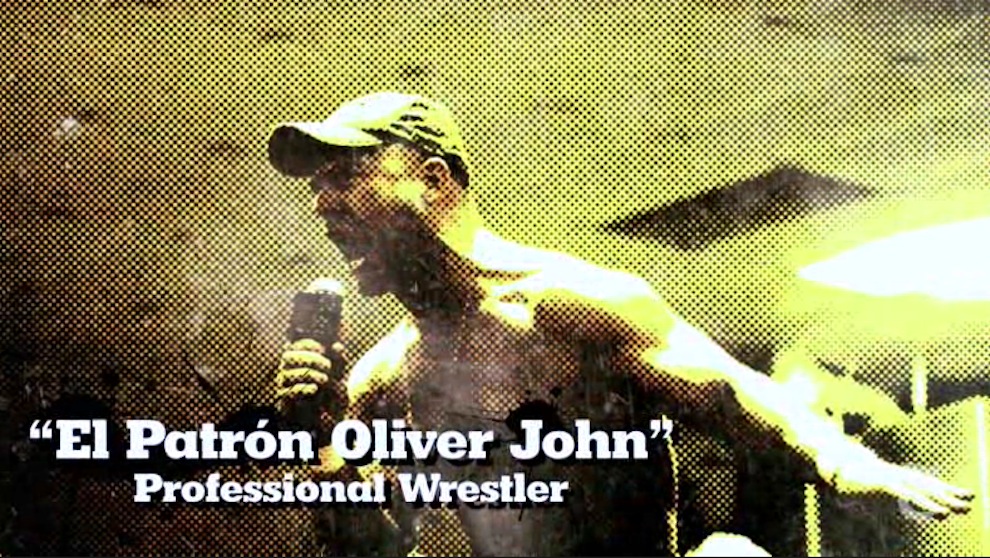
If you really want to strike a blow for immigration reform, it’s best to do it in a lucha libre mask. That’s the lesson in one of the latest installments of The New York Times’ Op-Docs, the short film series that opens up the Times’ online opinion pages to aspiring documentarians.
Since 2011, the Times has invited filmmakers — including people like Alex Gibney, Jessica Yu, and Errol Morris — to make short movies with a point of view. Now they want to open the gate to the program a little wider. This fall, the Times will hold a competition to find new filmmakers. Think “America’s Next Top Op-Doc,” as the Times will partner with the Camden International Film Festival to find the best pitch for a new documentary from a group of finalists. The winner of the competition gets $2,000 towards the cost of their film. But perhaps more importantly for an aspiring filmmaker, the film gets splashed across the Times’ growing venues for video.
It’s no coincidence the Times is opening up Op-Docs at the same time the newspaper is pushing new resources into its video efforts, which are one of the four pillars of investment Arthur Sulzberger has laid out for the organization. The Times has brought in a new general manager for video, reshuffled staff to emphasize video development, and in the spring announced that all videos on nytimes.com would be free regardless of subscriber status.
Rebecca Howard, general manager for video production at the Times, said Op-Docs videos perform well and have found a dedicated audience. Though she wouldn’t offer specific numbers, Howard said Op-Docs videos are among the top performing videos for the Times.
As the Times’ staff continues to build out video programming, they plan to look to sections like Opinion as potential channels. Op-Docs works well as its own series because viewers know what they’re getting into, Howard told me: “One thing that’s so excellent about Op-Docs is it sets user expectations for what to expect when they click on it,” she said. (The same could be said about other budding Times video franchises like Retro Report.)
Howard said Op-Docs is a good example of what the Times would like to see its video shows do in the future: have a recognizable brand or identity that can both attract an audience (and advertisers) and travel well onto other platforms. It’s also an example of how individual series could lead to content-specific deals outside of the Times network; Howard said Op-Docs would be a good fit for indie theaters or TV networks that show documentaries.
This is not the first time Op-Docs has held a competition to find new filmmakers. In June, Op-Docs and the Sheffield Doc/Fest held their first joint pitch competition, awarding Kris Hoffman $5,000 to create a short film. Contestants will have a five-minute window to pitch — two minutes for their video reel and three minutes to talk. A panel of filmmakers will make the final decision on the winner.
“We’ve been around now more than a year and a half — the word is still getting out to the filmmaking community and the public,” said Jason Spingarn-Koff, series producer and curator for Op-Docs. “We’re always on the lookout for talented new voices and interesting and surprising projects.”
About 72 films have been shown under the Op-Docs banner. There’ve been animated river rats, reasons not to vote, and lonesome pianos. Spingarn-Koff estimates there are around 20 films in various stages of production right now.
While the project has employed a number of well known directors, Spingarn-Koff said one of its goals is to find people who have an eye for nontraditional stories that can work across platforms. “The format can be challenging for people used to making features,” he said. “The short form has been a somewhat neglected form of filmmaking, because there hasn’t been much of a marketplace for it.”
But the films also need to be as compelling in the palm of your hand as they are on the big screen. Op-Docs move along the same channels as the rest of the Times videos, meaning a viewer could be finding it on NYTimes.com as they are on in a Times smartphone app or on Hulu.
That also extends to the movie theater. This summer, the Times is doing Op-Docs screenings in Los Angeles and San Francisco, showing a collection of the short films along with a discussion with the directors. For newer documentary makers, that’s a remarkable amount of exposure, Spingarn-Koff said. In some cases, that can lead to new projects. Sometimes, in the case of Laura Poitras, who made the Op-Doc “The Program,” it means playing a role in revealing the National Security Agency’s domestic surveillance program.
Rebecca Richman Cohen directed Code of the West, a look at the fight over medical marijuana in Montana, and later made a short feature for Op-Docs to revisit and update the issue. Spingarn-Koff said the Times’ reach helps filmmakers create new connections, but also develop feedback channels on how the audience receives their work. “They reach a really wide audience and an audience that often cares about the projects and the statements that they are making,” Spingarn-Koff said.
Op-Docs operates under the Times Opinion Pages, better known as home to the likes of Thomas Friedman, David Brooks, and Maureen Dowd. Andrew Rosenthal, editorial page editor for the Times, said over email he believes Op-Docs are an organic evolution of the op-ed format. The videos bring in not only new perspectives, but also a new audience, he said. One measure of the popularity of Op-Docs, Rosenthal said, is that videos will often wind up in the most-emailed list.
Rosenthal said he hopes to continue to expand Op-Docs in the future. “It makes our pages livelier, more interesting and just plain more entertaining,” Rosenthal said.